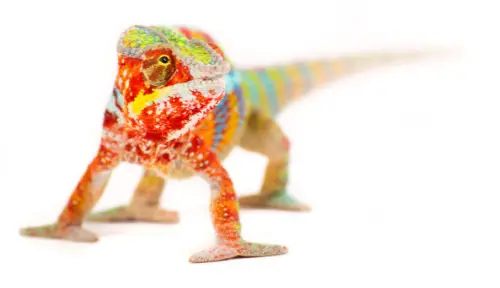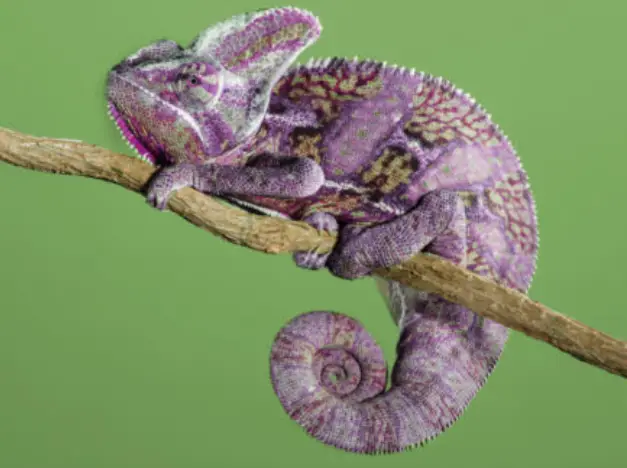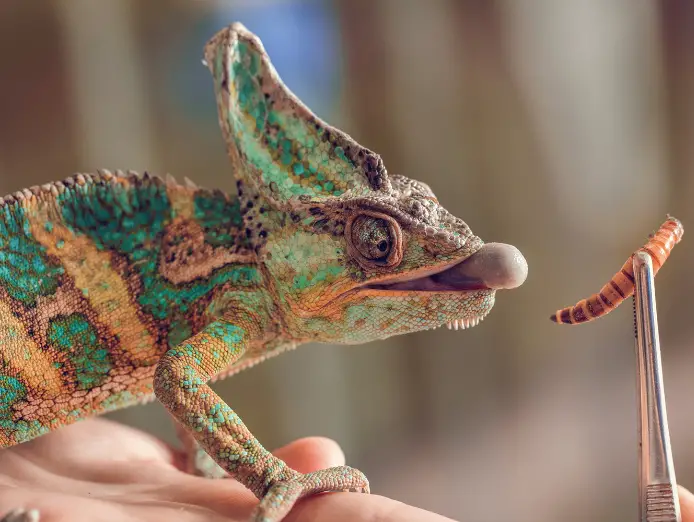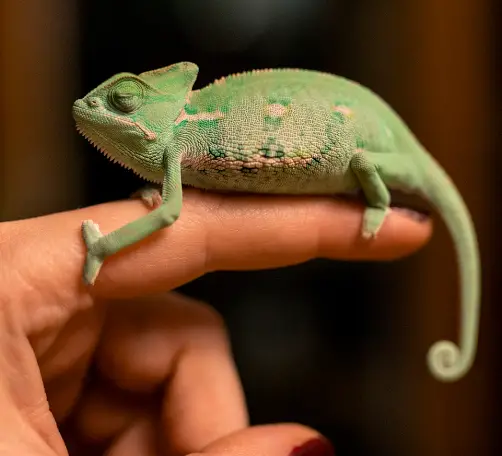Chameleons are known for their remarkable ability to change color and adapt to their surroundings, but one question that many people often ask is whether or not they can see in the dark. In this article, we’ll delve into the topic and explore what we know about chameleons and their vision abilities.
To start, let’s define what we mean by “seeing in the dark.” Many animals have evolved adaptations that allow them to see in low light conditions, such as nocturnal animals like owls and bats. However, even animals that are not strictly nocturnal may still have some level of night vision. The way that an animal’s eyes are structured and the types of cells in their retinas can determine how well they can see in low light conditions.
So, with that in mind, let’s explore whether chameleons can see in the dark.
How do chameleons see?
Before we can answer the question of whether chameleons can see in the dark, we need to understand how they see in general. Chameleons have fairly large eyes that can move independently, allowing them to have a 360-degree view of their surroundings. They also have a special type of lens in their eyes that can rapidly change shape to focus on different distances.
One interesting feature of chameleon vision is their ability to see in both UV and visible light. They have specialized cells in their eyes called cones, which allow them to see color, and these cones are sensitive to a wider range of light than human eyes. They also have specialized cells called rods, which are more sensitive to low light conditions but cannot detect color.
Can chameleons see in the dark?
Chameleons, like most reptiles, have generally good vision during the day but are not well adapted for seeing in complete darkness. They rely on their eyesight to locate prey, predators, and potential mates, and their eyes have certain adaptations that assist them in their natural habitat. However, they do not possess the specialized adaptations found in some nocturnal animals, such as owls or cats, which have enhanced low-light vision.
Chameleons have relatively large, independently moving eyes that provide them with a wide field of view. They can perceive a broad range of colors, including ultraviolet light, which is invisible to humans. This allows them to detect and communicate with other chameleons using visual signals.
While chameleons may have some limited ability to see in dim light, their vision is primarily optimized for daytime conditions. They lack a reflective layer behind their retinas called the tapetum lucidum, which is found in the eyes of many nocturnal animals and enhances their night vision. Consequently, chameleons are generally less effective in low-light or dark environments.
It’s worth noting that different species of chameleons may have slight variations in their visual capabilities and adaptations depending on their natural habitats and behaviors.
What types of light can chameleons see?
As mentioned earlier, chameleons have cones in their eyes that allow them to see color. They can see in both UV and visible light, which means they can see colors that are not visible to humans. This is thought to be useful in many situations, such as helping chameleons find food or identify other members of their species.
Do different types of chameleons have different types of vision?
There are many different species of chameleons, and they have adapted to different environments and lifestyles. Some species are more arboreal (tree-dwelling), while others live on the ground. Some chameleons are active during the day, while others are more active at night. It’s possible that different chameleon species have evolved slightly different vision abilities depending on their unique needs and habitats.
How do chameleons hunt?
Chameleons are primarily insectivores, and they use their long, sticky tongues to catch prey. They have excellent depth perception and can accurately judge the distance to their prey before striking. Chameleons also have excellent vision and can spot prey from far away.
Can chameleons see in the water?
Chameleons are not adapted for swimming and spend most of their time on land. However, they can see in the water to some extent. Like all animals, chameleons’ eyes have evolved to work best in air, but they can still detect light and movement in water. If a chameleon falls into water, they will likely try to swim to the nearest solid surface and climb out.
Conclusion
In conclusion, while chameleons have some adaptations that allow them to see in low light conditions, they are not well adapted to seeing in the dark and are primarily active during the day. Chameleons have excellent vision and can see both UV and visible light, which helps them in many aspects of their lives, including hunting for prey and finding potential mates. While different chameleon species may have slightly different vision abilities, all chameleons are well-equipped to navigate their environments and find food.







